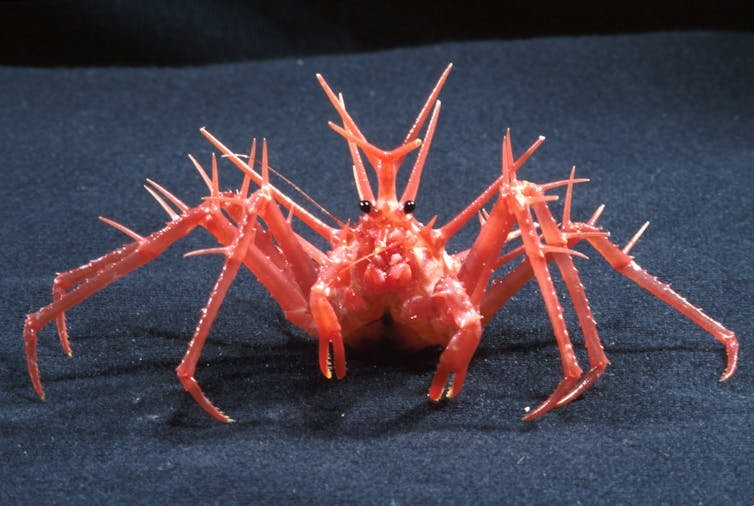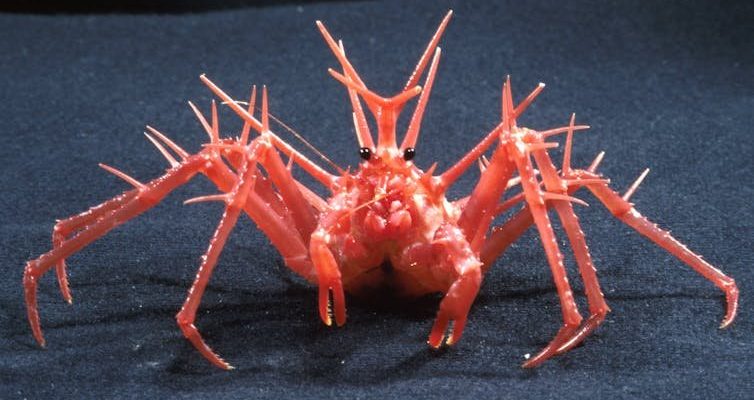
King crabs are not just your average crustaceans; they’re like the royal family of the sea, boasting impressive features and a captivating history. To understand their evolution, we must travel back millions of years to explore their ancient ancestors and the environmental changes that shaped them. So, let’s strap our fins on and dive into the evolutionary journey of the king crab!
Tracing Back to Their Ancestors
To fully grasp the evolution of the king crab, we need to start with their roots. Believe it or not, king crabs have ancestral ties to a group of creatures known as anomalocaridids. These fascinating marine animals roamed the oceans over 500 million years ago. They were the giants of their time, with elongated bodies and pairs of large, spiny appendages.
You might be wondering how we went from these ancient giants to the king crabs we know today. Over time, as the Earth’s environment changed, so did these ancestors. The ocean’s temperatures fluctuated and new predators emerged, pushing these creatures to adapt. This adaptation led to the development of hard exoskeletons and efficient locomotion, laying the groundwork for future crustaceans.
In the evolutionary timeline, king crabs are believed to have diverged from other crab species around 150 million years ago. They adapted to life on the seafloor, evolving their unique body structure, which includes long legs and a robust, spiny carapace. This was just the beginning of their journey.
Adaptations to Their Environment
As king crabs evolved, they made remarkable adaptations that allowed them to thrive in various marine environments. They are primarily found in cold waters, especially in the North Pacific, where the currents are rich with nutrients.
One of the most notable adaptations is their ability to camouflage. King crabs can change their color to blend in with their surroundings, helping them avoid predators. This ability is a great example of how they’ve evolved to survive in a world where danger lurks around every corner.
Moreover, their large size serves a purpose, too. A bigger crab can fend off smaller predators and dominate the food chain. Interestingly, their strong pincers are not just for show; they are highly functional tools for hunting and scavenging. This combination of size and strength makes king crabs formidable creatures in their underwater realm.
The Role of Climate Change
Climate change has played a significant role in shaping the evolution of king crabs. As ocean temperatures rise and currents shift, the habitats of these crabs change, forcing them to adapt once again.
For example, warmer waters have allowed king crabs to expand their range into new areas, including regions where they were once absent. This expansion presents both opportunities and challenges. While they may find new food sources, they also encounter new competitors and predators.
If you think about it, this situation is like a game of musical chairs. As the music changes, some crabs have to find new places to sit—sometimes successfully, other times not. This ongoing struggle for survival is a testament to the resilience and adaptability of these incredible creatures.
Unique Life Cycle and Reproduction
The king crab’s life cycle is another fascinating aspect of its evolution. These crabs have a complex reproductive strategy that maximizes their chances of survival. A female king crab can produce thousands of eggs at once, which she carries on her abdomen until they hatch.
After hatching, the larvae go through several stages before transforming into juvenile crabs. During this time, they’re vulnerable and must rely on their ability to drift with ocean currents, which can be a perilous journey. Only a small percentage of these larvae will survive to adulthood, making their reproductive strategy a balancing act of quantity versus quality.
Interestingly, the timing of their reproduction coincides with specific environmental cues. Changes in water temperature and food availability guide when they mate and release their eggs. This synchronization with their environment is yet another way king crabs demonstrate their evolutionary adaptability.
Feeding Habits and Ecological Impact
King crabs are omnivores, which means they eat a variety of foods, from algae to small fish and even other crustaceans. Their diverse diet allows them to occupy various ecological niches and reduces competition with other marine species.
You may be surprised to learn that king crabs also play a significant role in their ecosystems. As scavengers, they help recycle nutrients back into the ocean. When they feed on dead organisms, they contribute to the overall health of their habitat.
This ecological impact is crucial for maintaining balance in the marine food web. Plus, king crabs serve as prey for larger animals like seals and sea lions, showcasing their importance in the larger context of ocean life.
The Cultural Significance of King Crabs
Beyond their biological importance, king crabs have significant cultural and economic value. Many coastal communities rely on king crab fishing for their livelihoods. The allure of these crabs has even led to the popular reality TV show “Deadliest Catch,” which highlights the dangers and excitement of crab fishing.
In many cultures, king crabs are not just a food source; they also symbolize culinary excellence. An exquisite dish featuring king crab will often be the centerpiece of a fine dining experience. This cultural significance underscores how intertwined these creatures are with human life and traditions.
You might be surprised to learn that king crab fishing is a highly regulated industry. Sustainable fishing practices are essential to ensure that these magnificent creatures don’t face extinction due to overfishing. This commitment to preserving their populations shows how much we value not just their flavor, but their existence.
The Future of King Crabs
As we look ahead, the future of king crabs is tied closely to the health of our oceans. With climate change continuing to impact marine environments, the coming years may pose challenges for these resilient crustaceans.
Efforts to monitor their populations and understand their behaviors in response to changing conditions will be critical. Scientific research plays a vital role in helping us protect these species and ensure they continue to thrive.
You might ponder what more we can do. Supporting sustainable seafood practices and advocating for ocean conservation are great ways to contribute to their future. By taking care of our oceans, we’re not just protecting king crabs; we’re preserving the rich tapestry of marine life that benefits us all.
In closing, the evolutionary journey of the king crab is a remarkable story of adaptation, survival, and ecological significance. From their ancient ancestors to their modern-day adaptations, understanding them helps us appreciate the complexity of life beneath the waves. As we continue to explore and learn about these fascinating creatures, let’s remember our role in ensuring their survival for generations to come.

